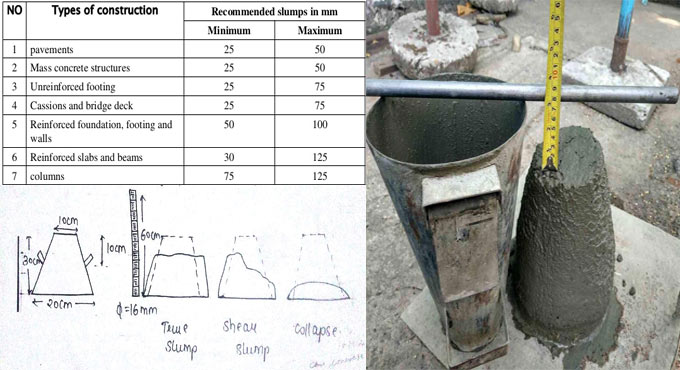
Slump Test Procedure to check the workability of concrete
Slump is considered as mostly recognized method that is undertaken to determine the workability of the concrete in the construction site or in laboratory.
This test is very effective for the concrete that contains medium to high workability. This test is not recommended for the concrete contains very low or very high workability.
It is simply utilized like a control test and provides an intimation concerning the homogeneity of concrete from batch to batch.
The apparatus required for this test comprises of a metallic mould in the form of frustum of a cone containing bottom diameter of 20 cm ,top diameter of 10 cm and height of 30 cm and a tamping rod of height 60 cm and diameter 16 mm.
Procedure for test
The interior surface of the mould is exhaustively cleansed and freed from redundant moisture and consolidation of any old set concrete prior to conduct the test.
To conduct this test, a mould is arranged on a even, horizontal and dry surface. Then it is filled by concrete in four layers where every layer is perfectly compacted by making use of the tamping rod and subjecting it to 25 number of blows.
Once the mould is entirely filled, it is gradually and safely lifted in vertically upward direction. It facilitates the concrete to subside .This subsidence is mentioned as slump valve and it is again applied to specify the workability of concrete.
The nature of the slump acquired in this test can also be utilized to specify the characteristic of the concrete with regard to the cohesioness being consumed by it.
Given below, the details of suggested slumps for various types of construction works :-


